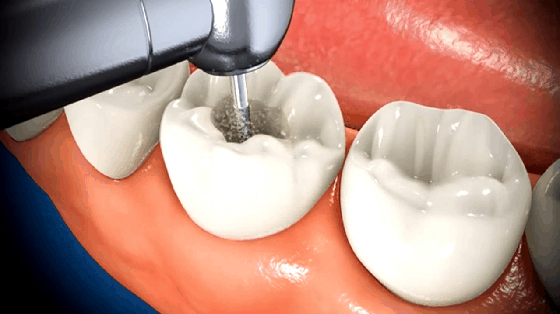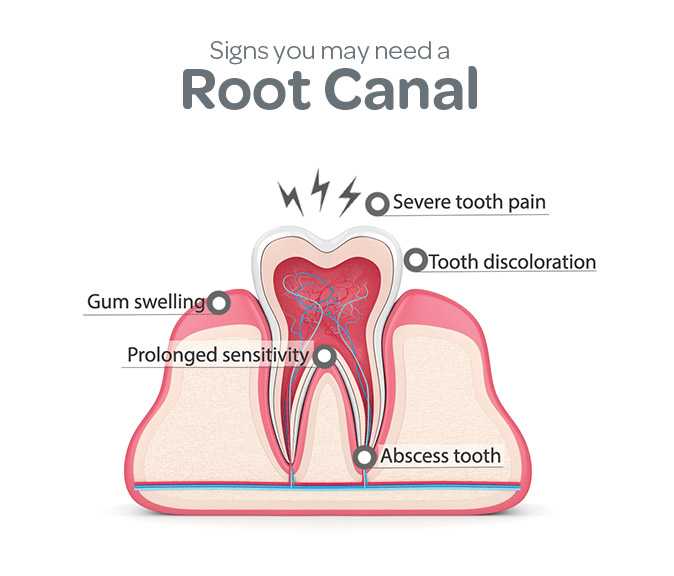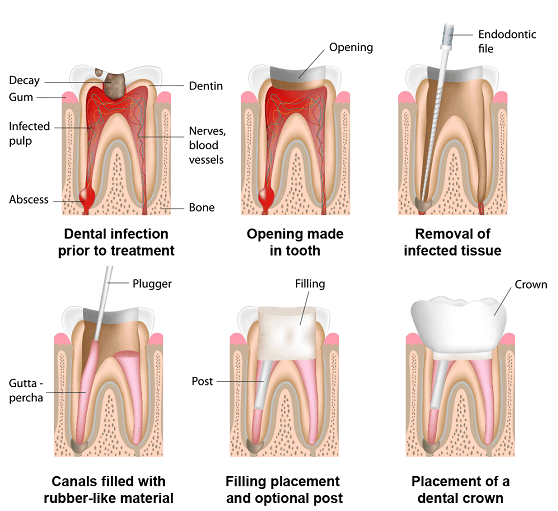Root Canal Treatment
Whenever we think of a dentist, one of the first things that comes to mind is ‘toothache’ and ‘root canal’. Whenever there is an extensive development of the bacteria, the chances of decaying increases. In several cases, the decaying of the tooth reaches the root of the teeth, which infects the pulp area.
This kind of situation is accompanied by pain and can decay the whole tooth and might need to remove the tooth. So a proper tooth root canal treatment is the better way to treat the decay and save the tooth from damaging further. In fact, a large majority of the people fear RCT as they believe it is a painful procedure.

But, how many of us really know and understand what a root canal is how and why a RCT is performed?
RCT is a multi-step procedure that involves:
- Removal of the infected and inflamed pulp
- Cleaning the root canals and disinfecting them
- Filling the canals with an inert material and sealing them
- A post root canal crown or cap
Now that we know why a root canal procedure is done, the next question that comes to mind is when do you need one? Are there any signs and symptoms that indicate one may require a RCT?

Yes, there are some common situations that demand a RCT and these are:
- Teeth with deep decay
- Broken or cracked teeth
- Teeth with gum diseases
- Failed dental fillings
- Teeth that have suffered a trauma
Symptoms that most people are likely to experience that may indicate the need for a RCT:
- Tooth ache: This is one of the first reasons why you would visit a dentist and the pain can range from mild to severe. The tooth ache can increase on changing position, especially while lying down or biting onto something using that particular tooth.
- Sensitivity: In normal cases, the enamel layer covers the inner two layers and we therefore, do not experience any sensitivity. However, when the dentin and pulp layers are exposed, you might experience increased sensitivity to air, hot foods, sour foods and sweet foods.
- In many cases, the tooth pain might be mild and most patients tend to ignore it. However, even though the pain subsides, the infection can still spread to tissues around the decayed tooth, resulting in a swelling.
A large number of patients who report to the dentist with a swelling are treated by root canal procedure.

When you hear the word ‘root canal treatment’, apart from pain, another question that comes to mind is “How many visits does a root canal take?” Well as mentioned earlier on, RCT is a multi-step procedure and it usually takes 1-2 sittings, but can take longer based on the condition of the tooth and the level of infection.
Here is what a RCT procedure entails:
- X-ray: X-ray is indispensable for a root canal procedure and is the first step as well. In order to determine the cause of your pain and the extent of decay, one of the first things your dentist does is take an x-ray of the affected tooth. After an x-ray is taken, in most cases, the next step is to inject a local anaesthetic to ensure you have a painless procedure. In some cases, however, since the patient is asymptomatic or the tooth is completely dead and painless, local anaesthesia may be omitted.
- Removal of decay and preparing the cavity: The next step in RCT is the removal of all the decay that can be seen and preparing a cavity in the tooth to access the inner pulp easily.
- Removal of infected pulp, drainage of any pus from underneath the tooth: Once straight-line access has been obtained, the infected and inflamed pulp is removed completely. In some cases, the pulp may have disintegrated and only specks of it remain, which can be washed out by using a saline solution in the canals. In cases where there is pus accumulation beneath the root, accessing and removing the pulp facilitates drainage of pus and provides immediate relief to the patient.
- Cleaning, disinfecting and preparing the canals: Once the pulp has been removed and the canals are disinfected with saline solution, the canals are cleaned and shaped to be able to accommodate the filling material.
- Sealing the canals with inert material and a sealant: In ideal cases, the canals can be sealed with the inert rubber-based material in the same sitting itself. Such a RCT treatment is called as single-sitting root canal. However, in practise, most cases require a gap of 3-5 days before the canals can be permanently sealed. In the interim, the dentist places a calcium-based medication to allow the inflamed tissues to heal. Once the canals are ready to be sealed, rubber-based cones are placed into the canals and sealed. These cones are inert in nature and do not dissolve in saliva or blood and thereby, prevent re-infection of the tooth.
- Post-root canal filling and crown: Once the canals have been sealed, it is time to restore the decayed crown portion of your tooth with tooth filling material. After this, the tooth crown is shaped for the placement of a cap that will strengthen the tooth.
1. Serious pain and discomfort
2. Loss of the tooth
3. Spread of infection
4. Formation of an abscess
